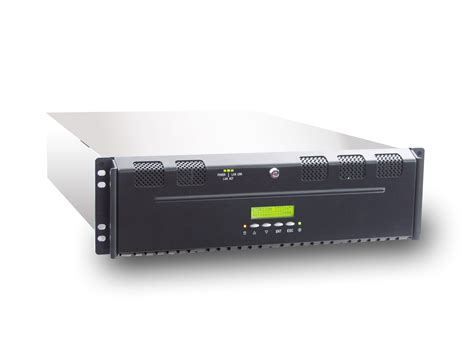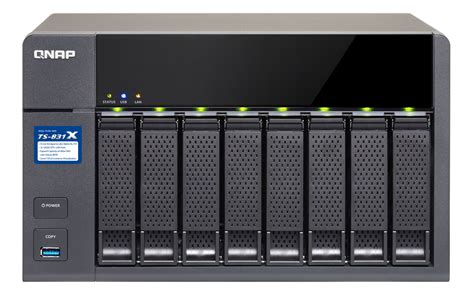Introduction to Rugged NAS
In today’s data-driven world, the need for reliable and secure data storage solutions is more critical than ever. Network Attached Storage (NAS) servers have become increasingly popular due to their ability to provide centralized storage, easy access, and data protection. However, when it comes to harsh environments or remote locations, a standard NAS server may not be sufficient. This is where a rugged NAS server comes into play.
A rugged NAS server is designed to withstand extreme conditions, such as high temperatures, humidity, dust, and vibrations. These servers are built with durable components and enclosures to ensure continuous operation even in the most challenging environments. Whether you need a storage solution for a construction site, a remote research facility, or a military base, a rugged NAS server can provide the reliability and performance you require.
Benefits of a Low Power Rugged NAS
When setting up a rugged NAS server, it’s essential to consider power consumption. A low power rugged NAS offers several benefits, including:
-
Reduced energy costs: Low power consumption translates to lower electricity bills, which can result in significant cost savings over time.
-
Increased reliability: Low power components generate less heat, which can help extend the lifespan of the server and reduce the risk of hardware failures.
-
Enhanced portability: A low power rugged NAS can be powered by batteries or solar panels, making it suitable for use in remote locations where access to a reliable power source may be limited.
-
Eco-friendliness: By reducing energy consumption, a low power rugged NAS contributes to a smaller carbon footprint and supports environmental sustainability efforts.

Key Components of a Rugged NAS Server
To set up a low power rugged NAS server, you’ll need the following key components:
1. Rugged Enclosure
The enclosure is the first line of defense against environmental factors. A rugged enclosure should be:
- IP-rated (Ingress Protection) to protect against dust and water
- Shock-resistant to withstand vibrations and impacts
- Temperature-resistant to operate in extreme heat or cold conditions
Some popular rugged enclosure options include:
| Enclosure | IP Rating | Features |
|---|---|---|
| Pelican 1550 | IP67 | Watertight, crushproof, dustproof |
| Nanuk 960 | IP67 | Waterproof, impact-resistant, automatic pressure equalization |
| SKB 3i-2011-7B-C | IP67 | Waterproof, dustproof, military-grade |
2. Single Board Computer (SBC)
An SBC is the heart of your rugged NAS server. It should be low power, yet powerful enough to handle your storage needs. Some popular SBC options for a low power rugged NAS include:
| SBC | Power Consumption | Features |
|---|---|---|
| Raspberry Pi 4 | 3-7.6W | Quad-core CPU, up to 8GB RAM, Gigabit Ethernet |
| ODROID-HC4 | 2.5-5W | Quad-core CPU, 4GB RAM, 2x SATA 3.0 ports |
| Rock Pi 4 | 3-6W | Quad-core CPU, up to 8GB RAM, M.2 NVMe SSD support |
3. Storage Drives
For a rugged NAS, it’s crucial to choose storage drives that can withstand harsh conditions. SSDs (Solid State Drives) are generally more durable and shock-resistant than traditional HDDs (Hard Disk Drives). However, HDDs offer larger capacities at a lower cost per gigabyte.
Some popular storage drive options for a rugged NAS include:
| Drive | Capacity | Features |
|---|---|---|
| Samsung 860 PRO SSD | Up to 4TB | MLC NAND, AES 256-bit encryption, 5-year warranty |
| Western Digital Red Pro HDD | Up to 18TB | NASware 3.0, 3D Active Balance Plus, 5-year warranty |
| Seagate IronWolf Pro HDD | Up to 18TB | AgileArray, IronWolf Health Management, 5-year warranty |
4. Networking Components
To connect your rugged NAS to the network, you’ll need reliable networking components. Consider the following:
-
Ethernet switch: A rugged, industrial-grade Ethernet switch with support for PoE (Power over Ethernet) can simplify the installation process and reduce the need for additional power cables.
-
Wi-Fi adapter: If you need wireless connectivity, choose a Wi-Fi adapter that supports the latest standards (e.g., 802.11ac) and can operate in the desired frequency range (2.4GHz or 5GHz).
-
Antennas: For wireless connectivity in challenging environments, consider using external antennas with higher gain and directional properties to improve signal strength and range.

Setting Up the Rugged NAS Server
Now that you have all the necessary components, it’s time to set up your low power rugged NAS server.
Step 1: Assemble the Hardware
- Install the SBC, storage drives, and networking components into the rugged enclosure.
- Ensure that all components are securely fastened and properly connected.
- Close the enclosure and verify that it is properly sealed to maintain its IP rating.
Step 2: Install and Configure the Operating System
- Choose a NAS-specific operating system, such as OpenMediaVault, FreeNAS, or Rockstor.
- Install the operating system on the SBC according to the provided instructions.
- Configure the basic settings, such as network configuration, user accounts, and storage pools.
Step 3: Set Up Storage and Shares
- Create storage pools using the installed storage drives.
- Configure RAID (Redundant Array of Independent Disks) for data protection and performance.
- Set up shared folders and configure access permissions for users and groups.
Step 4: Configure Backup and Disaster Recovery
- Set up regular backups of your data to an external storage device or cloud service.
- Configure snapshots to create point-in-time copies of your data for easy recovery in case of accidental deletions or data corruption.
- Test your backup and disaster recovery procedures to ensure they work as expected.
Step 5: Secure the Rugged NAS
- Enable encryption for data at rest and in transit.
- Configure a firewall to control incoming and outgoing network traffic.
- Set up a VPN (Virtual Private Network) for secure remote access to the NAS.
- Regularly update the operating system and installed applications to ensure the latest security patches are applied.

Conclusion
Setting up a low power rugged NAS server requires careful consideration of the hardware components, operating system, and configuration settings. By choosing the right components and following best practices for setup and security, you can create a reliable and efficient storage solution that can withstand even the harshest environments.
A rugged NAS server offers the benefits of centralized storage, easy access, and data protection, while also providing the durability and resilience needed for use in challenging conditions. Whether you need a storage solution for a remote job site, a scientific research facility, or a public safety agency, a low power rugged NAS can meet your needs and exceed your expectations.
Frequently Asked Questions (FAQ)
-
Q: Can I use a regular NAS enclosure for a rugged NAS setup?
A: While a regular NAS enclosure can work in some cases, it is not recommended for use in harsh environments. A rugged enclosure with the appropriate IP rating and shock resistance is essential to protect your hardware and ensure reliable operation. -
Q: How much storage capacity do I need for my rugged NAS?
A: The storage capacity you need depends on your specific use case and the amount of data you plan to store. Consider factors such as the number of users, the types of files being stored, and future growth when deciding on the storage capacity. -
Q: Can I use a rugged NAS server for real-time video surveillance?
A: Yes, a rugged NAS server can be used for real-time video surveillance. However, you’ll need to ensure that the SBC and networking components can handle the bandwidth and processing requirements of multiple video streams. -
Q: How often should I replace the storage drives in my rugged NAS?
A: The lifespan of storage drives can vary depending on factors such as usage, environmental conditions, and manufacturer quality. As a general rule, consider replacing your storage drives every 3-5 years to minimize the risk of data loss due to hardware failure. -
Q: Can I use a rugged NAS server in a vehicle?
A: Yes, a rugged NAS server can be used in a vehicle, such as a police car, fire truck, or military vehicle. However, you’ll need to ensure that the enclosure and components are rated for the specific vibration and shock levels encountered in a mobile environment. Additionally, consider power management and connectivity options suitable for use in a vehicle.

No responses yet